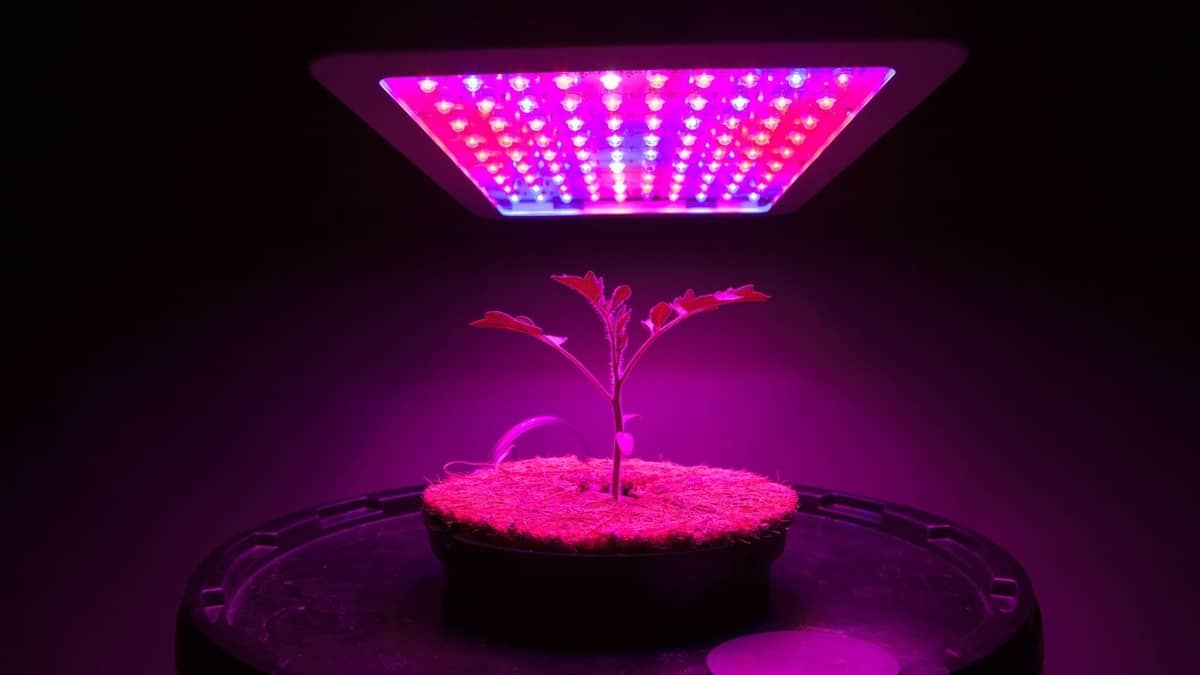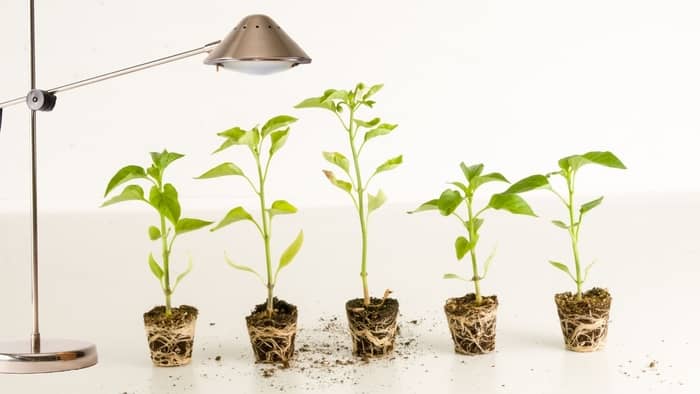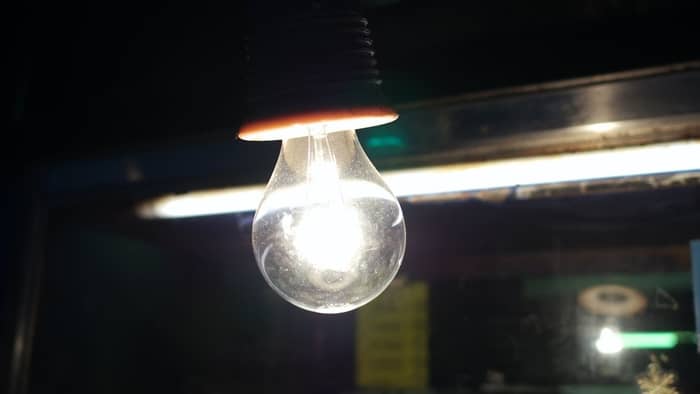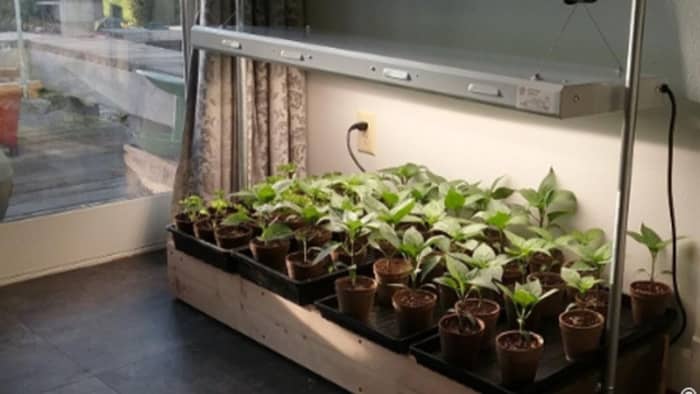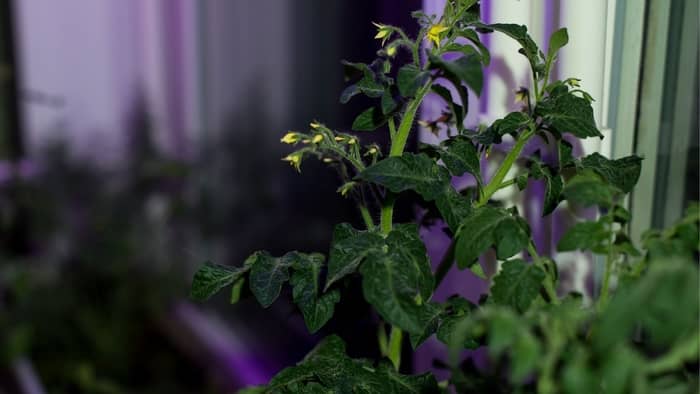Last Updated on January 17, 2022 by Guillermina
Winter brings a significant reduction in the amount of light that plants receive. Learn all about the best light to grow tomatoes indoors.
Growing tomatoes indoors is not always an easy job, but the fruits of your labor are therefore sweet. It is necessary to pay attention to choosing the right plant variety, proper care, pruning, appropriate airflow, but also something that we often forget – lighting.
Lighting is what allows your tomatoes to achieve sufficient growth and development. Therefore, keep reading to learn more about the best light to grow tomatoes indoors.
Best Light To Grow Tomatoes Indoors
There are currently several different categories of grow lights for tomatoes on the market, and each has its advantages. This is a short summary that should help you make an easier (and good) decision.
Color Temperature
The first thing you need to pay attention to is the color temperature as different grow lamp types emit light in different ways. The light spectrum is expressed in degrees Kelvin (K) and indicates the visual “temperature”.
Those growing lights that have a higher color temperature (5000-6500K) provide a full light spectrum which as a result stimulates all phases of vegetative growth. They also emit light with a bluish tinge. Growing lights with lower color temperatures (2500-3000K) give a reddish or even yellow glow. This type of light encourages flowering and is often used when the plant is developing fruit.
The best light for growing tomatoes indoors is one that can mimic the light in their natural environment.
Lamp Options
There are four kinds of light lamps to choose from:
- incandescent,
- fluorescent,
- HID (high-intensity discharge),
- LED (light emitting diode).
Some are more ideal and practical than others. Therefore, read more about each of them below.
Incandescent Lights
Although technically not in the lighting category, they are used for it. Their main disadvantage is that they convert most of their electricity into heat rather than light. Therefore, they are not recommended as primary grow lights. Instead, you can use them as secondary or supplemental lighting.
Fluorescent Lights
This is one of the most popular options for the home gardener or hobbyist. There are (at least) 3 options: Standard T12 fluorescents, High Output (HO) T5 fluorescents, and compact fluorescents (CFL).
Standard T12 Fluorescents
- Use: at the beginning.
- Color temperature: up to full-spectrum (5000K).
- Lifespan: up to 20,000 hours.
High Output (HO) T5 fluorescents
- Use: the primary light source, great for growing from seed as well as throughout the entire tomato growing process.
- Color temperature: low (2700K), and high (6500K).
- Lifespan: up to 10,000 hours.
Compact Fluorescents (CFL)
- Use: best for established plants.
- Color temperature: low (2700K), full spectrum (5000K), and high (6500K)
- Lifespan: up to 10,000 hours.
Do Tomatoes Grow Fastest Under Fluorescent Or Natural Light?
Tomatoes need at least 8 hours of direct sunlight or 16 hours of artificial light per day. If they don’t receive enough natural light, you will need to supplement the natural sunlight with artificial light.
There is one aspect we need to emphasize, and that is the intensity or how strong the light is. Natural sunlight is much more intense than any supplemental/artificial light. Furthermore, higher intensity means that more energy is transferred to the plant. Therefore, it seems that plants that grow under natural sunlight will grow faster.
After all, don’t forget that the term “fast-growing” is quite subjective. It depends on what determines the growth, the height of the plant, the number of leaves, the size of the leaves, etc.
HID (High-Intensity Discharge) Lights
This type of grow light is most often chosen by professional horticulturists and large indoor growers. There are currently available two types of HID plant grow lights. Read more about each of them below.
Metal Halide (MH)
- Use: the primary light source when natural light is lacking.
- Color temperature: full spectrum.
- Lifespan: up to 10,000 hours.
High-Pressure Sodium (HPS)
- Use: secondary or supplemental lighting, especially suitable when plants flower and develop fruit.
- Color temperature: low (2200K).
- Lifespan: around 18,000-20,000 hours.
LED Lights
LED lighting is one of the latest plant-grow light technologies. They are extremely economical and efficient because they consume less energy and produce less heat compared to other types of lamps.
How far should LED grow lights be from tomato plants? Since LED lights produce far less heat compared to other types of lights, tomatoes can tolerate LED lamps to stand much closer to them. In general, the lamp should be placed about 12-30 inches from the top of your plant.
In addition, different wattages require different distances. These are the recommendations:
- Wattage is around 200 – 12-20 inches from the top of the plant.
- Wattage 1,000 or more – 36-46 inches from the top of the plants.
Finally, we must note that LED lights emit both red and blue wavelengths of light. The low intensity of blue light helps with the plant production of chlorophyll which means it stimulates photosynthesis. Red light, on the other hand, is very energetic, but not effective on its own.
So, do tomatoes need red or blue light? It takes both! Their combination allows your plants to be strong and have greener leaves.
What To Look For When Buying Grow Lights For Tomatoes?
Full-spectrum. This means that the lamp can reproduce the effects of sunlight on plants.
Heat sink. It prevents your plants from drying out from too much light.
K-value. Look for grow lights that are similar to natural sunlight (something in the 6000K range).
In Conclusion
As the days get shorter, the amount of light our tomatoes receive decreases. It is no wonder, therefore, that many home gardeners turn to grow lights to supplement the winter light levels. They allow your plants to receive more light for both photosynthesis and growth.
We hope you found this article on “best light to grow tomatoes indoors” useful. What is your opinion about growing lights? Let us know in the comments below!
You may also be interested in How Far Apart Do You Plant Roses?

